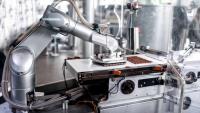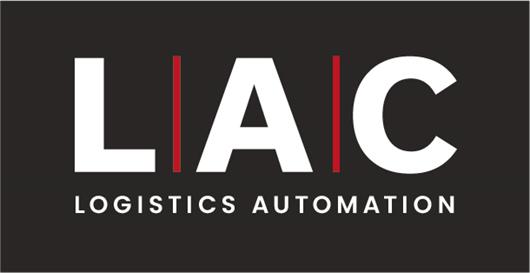 Add My Company
Add My Company
Sign In
Robotic Applications in the Food Industry
30-11-2023

The use of industrial robots is reported to be growing remarkably within the food industry over the past couple of years, helping to revolutionise food processing, sorting, handling, palletizing, picking and packaging. Resulting in them being a sizeable solution provider for many businesses of a range of sizes.
With the global food industry championing one of the UK?s biggest production sectors, contributing more than ?28 billion to the economy. Therefore, there?s no surprise that robotics have been introduced to help food production become more efficient and streamlined. The food and drink federation reported that SMEs make up 90% of the UK food producers, but they suffer from the modern challenges of food production and adapting to robotics, whilst trying to deal with increased demand from consumers.
Practical applications of food processing
When we think about robots within the food industry, their contributing activities can be separated into primary and secondary applications within the complete production process. Each application can speed up a specific production process, with a couple of applications outlined below.
Primary robotic applications:
Pick and place
Picking and placing robotics are being used more frequently than ever before, helping to improve productivity and reduce labour costs. Within the agricultural sector, carefully designed and programmed robotic arms can be used for multi-uses and have an array of different grippers dependant on the task at hand. For example, picking grapes, peppers or apples requires separate flexible equipment to harvest each crop effectively, whilst mitigating the possible damage and waste due to different shapes and sizes.
Fruit and vegetables have been traditionally picked by human workers, due to the delicate nature needed to avoid damage and the capability to identify whether they are ripe enough. However, with advancements in robotic solutions across multiple sectors and improvements in vision systems, picking and placing technologies are able to identify ripe products and gently grasp soft fruits without causing damage to the product itself, and be carefully placed into the production?s desired position.
Cutting and slicing
Although cutting and slicing can be perceived as a simple and monotonous task, there are also many difficulties that may arise dependant on the product itself. For example, if the product must be cut in a particular way to remain consistent with its branding, then a pre-programmed robotics machine can carry out this task, ensuring the job is identical each time.
Complex cutting and slicing techniques, such as manipulating objects into different shapes and creating new objects in the form of new cutting or slicing techniques has proved hard for robots to learn. However, recent experimental cutting operations have allowed robots to understand different desired attributes from a task, such as cutting ingredients to a particular thickness and length for the end user.
Secondary robotic applications:
Once products have undergone the primary applications, they then usually go through the secondary process before quality controlling. These secondary robotic food functions can include;
Product decorating
Robots within the food production industry has the ability to deliver consistent personalised products when it comes to decorating and marking them appropriately. Such decorating can include, preparing, cooking and garnishing pizzas, carefully decorating cakes in detail, marking pastries or branding chocolate. During this product process, the robots extended range of movements allows for a more efficient and increased ability to create and churn out consistent, high quality products 24/7.
Product packaging and palletising
Once the product has reached sustained effective quality control, the product can be packaged. This can involve wrapping and placing into suitable containers to then be packed into secondary containment ready for delivery.
Many smaller businesses are wary of adopting robotic technologies due to the perceived high initial costs involved, despite the clear ROI associated from correctly sourced and programmed kit. It is reported, however, that many
businesses are more likely to introduce robotics during the product packaging phase due to the less intricate requirements needed from the robotic programming, and subsequent cost associated with this.
Improving food safety
Another benefit of robots in the food industry includes their use to clean and decontaminate surfaces and most importantly food product areas. Specially designed robots can reduce the risk of contamination within the food industry.
Food contamination due to the use of manual labour can occur within products through the accidental transmission of human hair, nails or other material, potentially damaging the reputation of a brand. Although robots can help to mitigate this as much as possible, they too, need to be thoroughly cleaned on a regular basis to ensure such food contamination issues are also avoided.
What does the workforce in the food sector look like?
At the moment, the UK food and drink sector is experiencing severe labour shortages. Natwest reported that by 2024 a third of this industries workforce is due to retire, subsequently leaving a potential shortfall of around 140,000 recruits. As well as this, recent uncertainties around Brexit suggests that 47% of businesses current workforce in this sector are considering leaving the UK.
How will Brexit affect the food industry?
Towards the end of June 2019, the UK government launched a ?major review? of the country?s food system. This has taken into account robust and sustainable produce from British farmers and food manufacturers, trading and ongoing negotiations with the EU.
It is not yet known what the real level of impact that Brexit will have on seasonal workers within the agricultural sector as immigration rules will be heavily influenced by specific trade deals agreed between the UK and the EU, the situation should be closely monitored to ensure that the UK?s food security is not threatened.
Overall, food robotics can provide many benefits for a range of businesses. As further developments become available which will help with the customisability of tasks performed by robotics, this can then improve production and overall throughput of products whilst reducing reliance on manual labour and associated costs.
For more information on Robotic Applications in the Food Industry talk to L-A-C Logistics Automation
Enquire Now
More News
List your company on FindTheNeedle.

